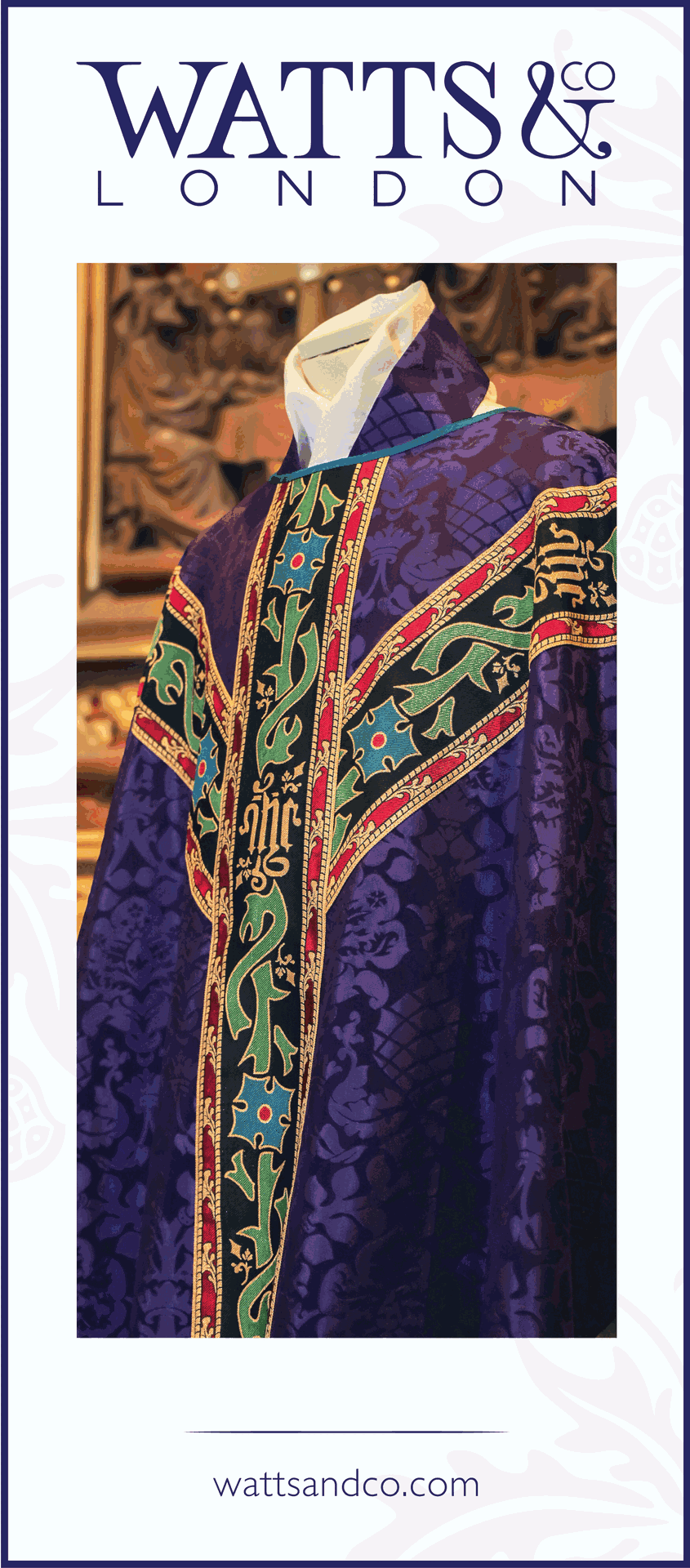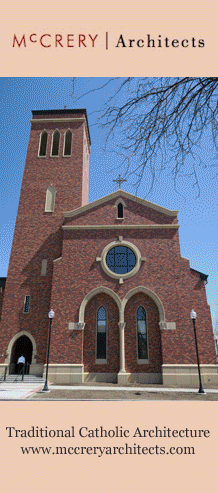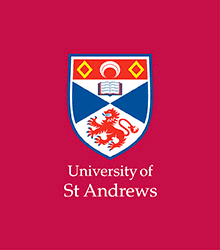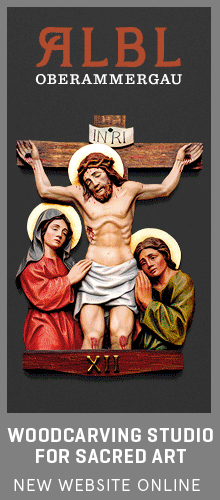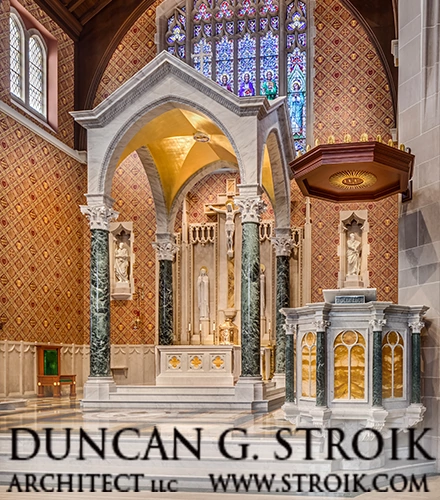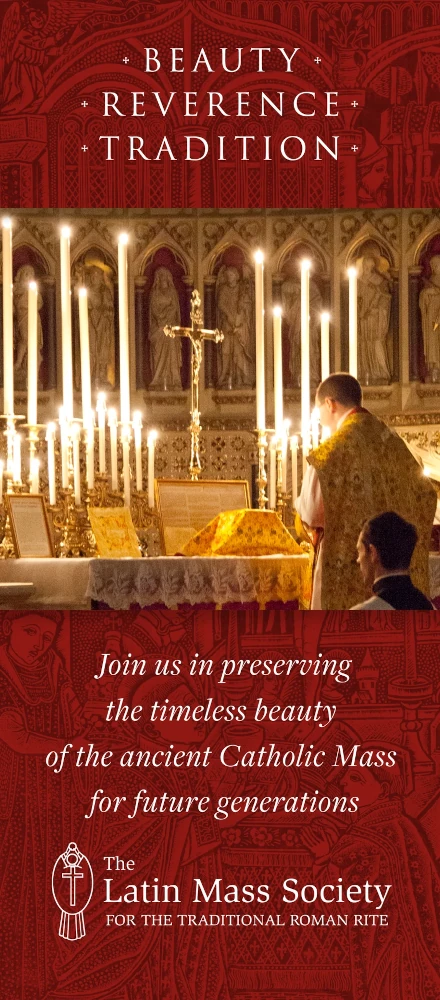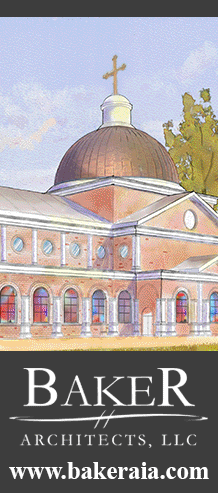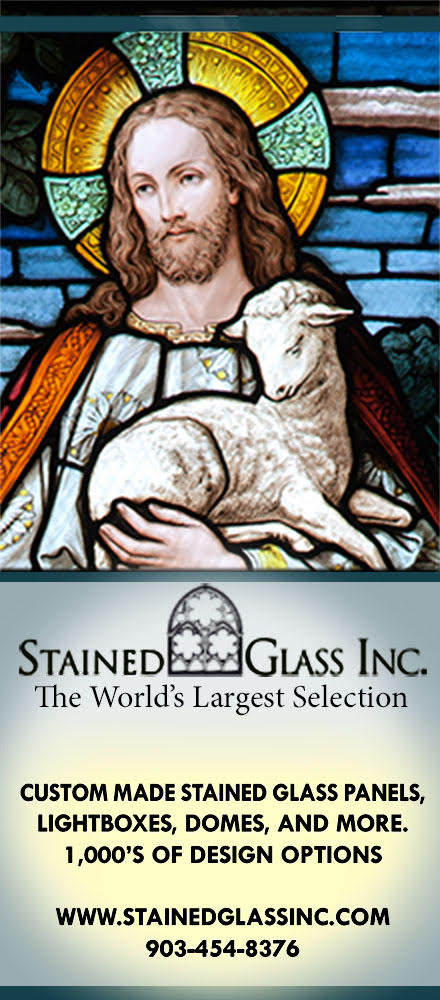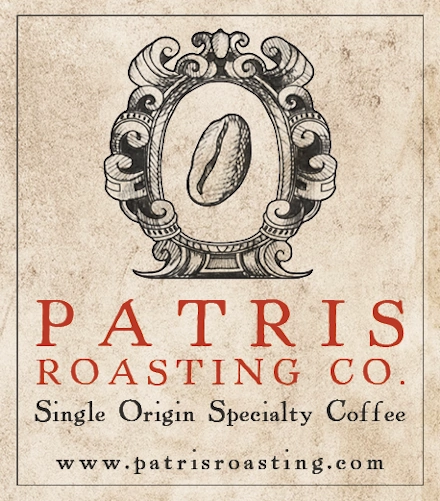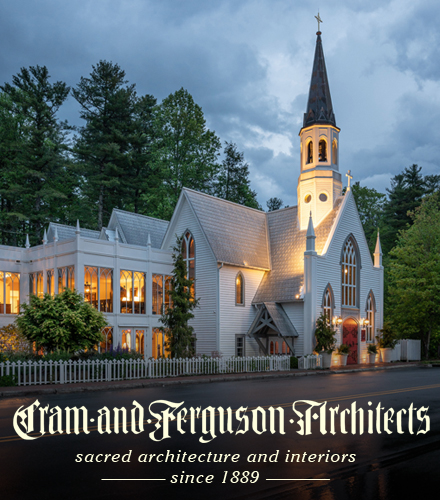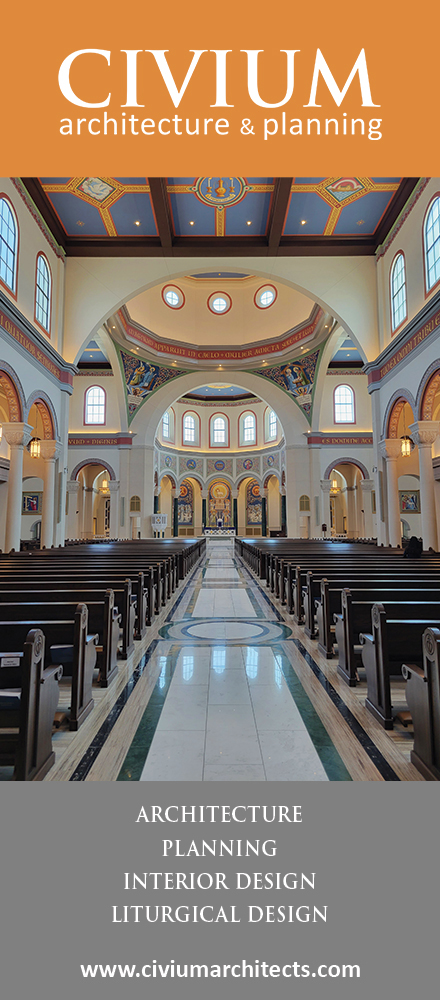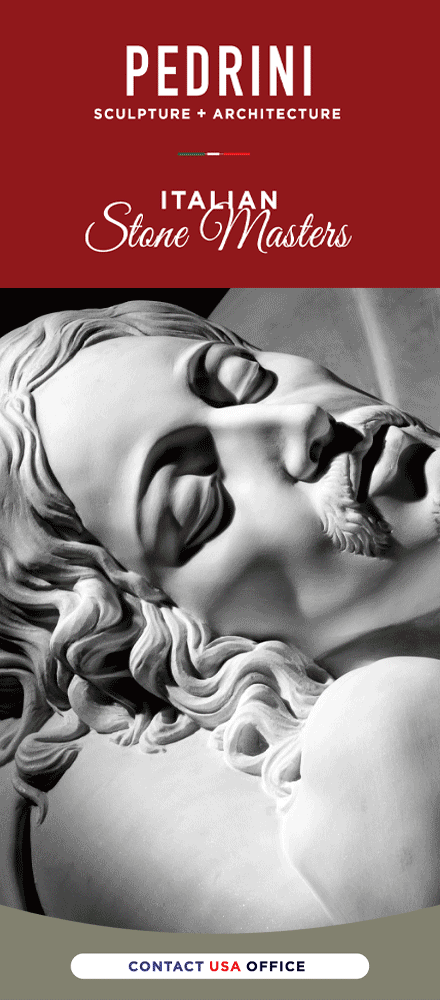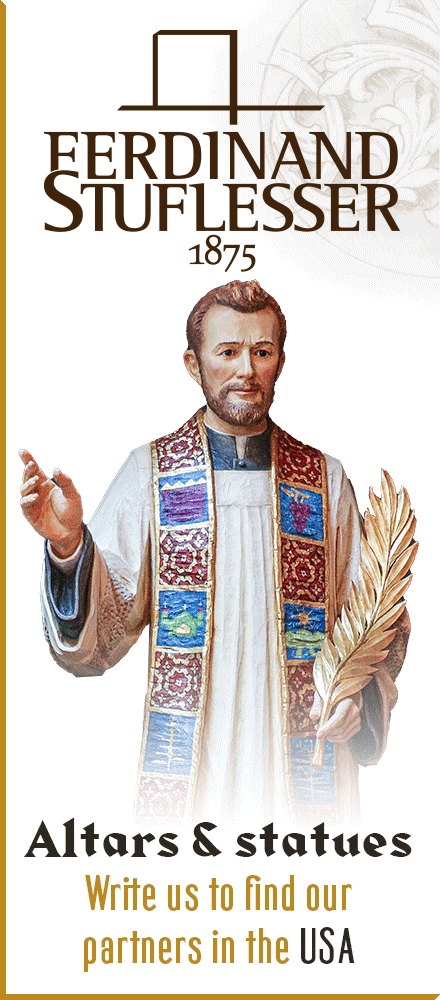One of our readers sent in a picture of their parish. It is a modern parish, but one which has some virtues working for it, particularly a large and beautiful cross, and the benefit of a tabernacle that is in the centre.
Ideally, the altar would be at least as wide as the cross on the wall behind, but again, such a thing would require purchasing a new altar. So while that would be ideal, what can be done in the here and now? Let's take a look.
Here is the present sanctuary:
What is lacking in so many modern or renovated parishes is a sense of focus, such as the reredos/high altar, baldacchino, riddle posts and curtains, or rood screen gives in traditional churches. These traditional elements not only beautify the church, they also give a dramatic sense of focus. As well, they often give a vertical focus to the church, which leads the eye up from where one is standing, up into the sanctuary and to the altar.
This shift in parish design was likely done intentionally to incarnate a new liturgical theology whereby the traditional focus upon the altar and sacrifice was lessened and new emphasis was given to the ambo (from which "the Word" is proclaimed) as well as to the baptismal font (which relates to the Christian community) and to the presider's chair (who leads "the faith community"). While the idea seems to have been to give these various aspects an equal emphasis, ironically the effect has been to give nothing much emphasis at all. There is little focus and from a design perspective, the result is often barren and chaotic.
Looking back to our parish here (which is in much better shape than what I describe above) even with the presence of a substantial and beautiful cross it still does not quite lend focus to the altar and sanctuary as is traditionally the case. While it is quite helpful, something is yet missing.
The light wood of the altar, and its table form, as well as the modern Cistercian simplicity of the design and woodwork, all lend itself to this problem. The sanctuary uses beautiful marble, but it needs something to draw this out. Many of the colours are very similar in shade, and with the simple, plain, modern designs, it lacks the ability for shadow to make for some visual interest, such as is present with traditional church furniture carving and design.
Speaking generally, I believe the focus for a relatively inexpensive revision which can help re-orient and re-enchant parish liturgy, ought to be on the altar (and the steps proceeding it if they exist), the cross (if it is present) and sanctuary space immediately surrounding the altar -- both before it and behind it. If possible, it should lend itself to some sort of vertical thrust, accomplished by these elements being joined together in a way that is unified. This can be done by the use of materials, colour, altar hardware and the positioning of the priest's chair.
Using these principles, here is what I came up with for this parish at first pass:
What I've done:
1) Added deep red carpeting (matching the red behind the cross) on the steps going up to the altar; the rationale is that this helps create a sense of the vertical height of the sanctuary and draws one up from the lower plane upon which the faithful are seated, up to the altar and sanctuary (this could go around the altar and back to the tabernacle ideally)
2) Added an altar frontal to the altar in a traditional style; altar frontals would be used here for all the liturgical seasons; hence, while I've shown red here, there should also be green, gold, white, purple/violet, black, and green. These would be either of velvet (very nice) or a brocade then with gold fringe and trim as pictured in a style that is simple, but traditional and dignified. These could probably be easily made by someone in the parish, custom fit to the altar in question. The sides of the altar would have the long white altar cloth hanging to the sides, again, diminishing the "table" appearance. This should be matched on the tabernacle "altar" as well.
3) I have added 4 matching traditional brass candlesticks which are traditionally styled and of decent height, two on the altar, and two by the tabernacle. Important as well are real beeswax candlesticks of at least equivalent height to the candlesticks or higher. This again creates both a nice traditional effect and helps frame your attention on the altar and tabernacle.
4) Though difficult to see because of the tabernacle, you will note that I've added an ornate, traditional brass altar cross to the centre of the altar; again, something with some height, standing a good 18" in height. This is in view of Cardinal Ratzinger's thought about this and "versus populum". Some might argue that the central crucifix on the wall is enough, but again, the orientation issue as regards the liturgy is very important. This is of course optional, but I think to be recommended.
5) The priest's chair has been turned to face the altar.
6) Quite substantial is the deep red fabric (preferably velvet) backdrop for the cross, with a canopy. The essential point here is again to draw focus to the central point of emphasis in the way a reredos would normally do. This is especially accomplished by the gold fringe which helps to frame the cross and the altar. The canopy aspect is aesthetically ideal, but an option which could take various forms depending upon various considerations. But the backdrop and gold fringe is very important in defining a substantial emphasis upon the altar and sacrifice. Not using this would severely detract from the whole point of this exercise.
7) Added matching vigil lamp on the other side to give balance and symmetry which again re-focuses us to the centre.
8) Flower pots have been removed; these aren't necessary when you've refocused emphasis with brass and fabric as we've done here.
9) Removed small table in centre aisle, to allow main focus on altar, and to prevent problems in liturgical processions.
10) Removed the old candlesticks which sat beside the altar and where very plain.
Not pictured here but if budget allowed:
a) Replace the current priest's chair with a more ornate chair for the priest, with matching red velvet fabric.
b) a more traditional pulpit that encloses the celebrant
In addition, if budget allowed, I would be tempted to put up a plaster drywall backdrop to the entire sanctuary area to cover the brick, until the points where the brick wall juts out. This would also allow painting and decoration to be done down the road, and also help to distinguish the sanctuary area from the walls of the rest of the church. It would also make a better backdrop for things like statuary, and the red-velvet.
Summary:
Required to purchase for this renovation:
1. Red velvet fabric and gold trim for backdrop
2. Altar frontals (trim and fabric)
3. Carpeting for steps and by altar
4. 4 brass candlesticks
5. 1 brass altar crucifix
The Question of Liturgical Law
The final important question in this revision is as pertains to liturgical law. Certainly there have been assertions made about what is and is not permissible in our sanctuaries today.
The question remains as to what is hard and fast and what is merely assertion based upon preference or a new liturgical theology.
If anyone believes anything here contradicts modern liturgical law, please do note it in the comments.
I will not claim to be up on all aspects of modern liturgical law.

